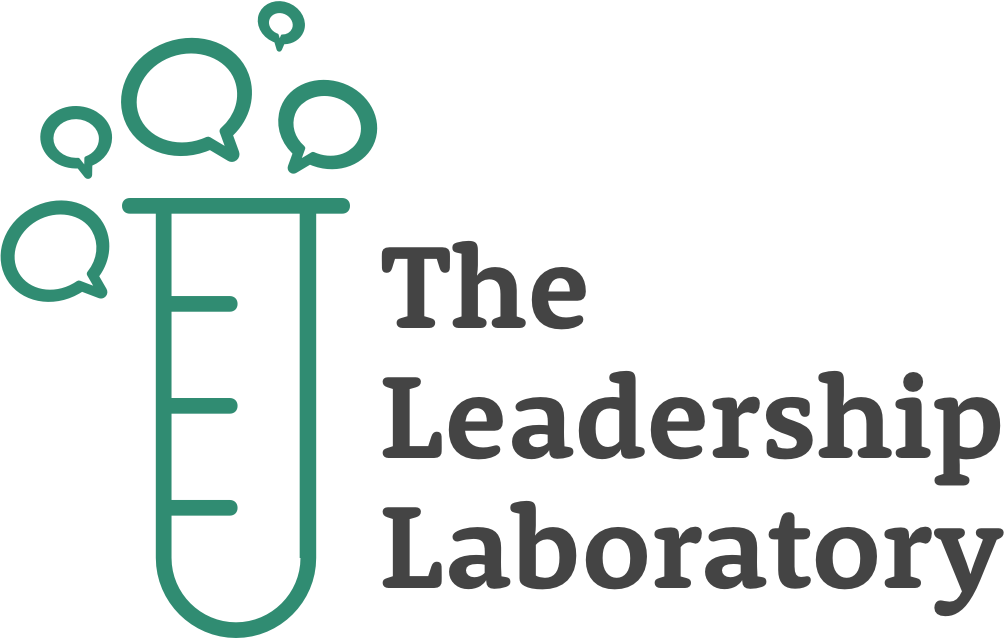Written by Jacob Goldstein — Executive Director
Interested in workshops on this topic for you and your team? Visit the Improv Workshops page for recommended interactive learning experiences from The Leadership Laboratory for emerging and established leaders in your organization.
As a child, I was afraid of everything. The slightest change in a schedule or the “what if?!” uncertainty of a situation would send me into a tailspin. As I grew older, the easily triggered fear certainly dissipated, though it never entirely goes away. While I have learned to exude confidence in the way I hold myself in most situations, and am able to remind myself of the skill sets I do have to overcome a challenging moment, new and unknown experiences or situations that push me outside my area of expertise can make my heart flutter and put my stomach in knots. For so many, when we’re scared, it’s easy to feel the desire to retreat or run away from uncertainty. Even when the task is hard or we feel triggered, one of the most crucial lessons we can learn is to embrace what happens when we step outside of our comfort zones.
I recently attended a high school fine arts performance, where students stood in front of hundreds of their peers to perform a song, dance, comedy sketch, magic trick, or rhythmic gymnastics routine. Beyond the incredible talent these students had, I had a long conversation with a friend afterwards about how impressive it was to see these students take center stage with all of the confidence in the world. So many adults, many of whom have impressive careers, academic achievements, or creative talents or abilities, would panic at the thought of performing on a stage like that in their current age. As we age, we become more and more risk-averse. Even risks as simple as a work presentation may seem like incredibly high stakes. Perhaps it was the coaching and support of teachers and mentors, though how can we ensure that confidence stays beyond the safety of a school environment? And for those past that age range, how can we bottle that up and share it with others?
Leap and The Safety Net Will Appear
I’m always impressed by those who can simply take the leap – I’m a more risk averse person, likely to weigh my options for far too long before taking the plunge. In improv, there’s a concept of “leaping and the safety net will appear”; in other words, take the risk, push yourself to do the hard thing, and those around you will help to support you through it. Whatever that may mean to you, it’s important to do what scares us. It’s important to push ourselves to do something hard. The first time we do it is scary, though we train our minds and bodies to learn to cope. The time after that becomes a bit easier. And a bit easier. There are always people in your corner here to cheer you on and help you to do it. And eventually, with time and patience, we’ve trained ourselves to do something we never thought possible.
At The Leadership Laboratory, we often talk about the concept of “Knowing Your Zone”. Essentially, there are three zones a task or activity can fall into – The COMFORT Zone, The STRETCH Zone, and The PANIC Zone. Like in the image below, the grouping of three looks different on an individual basis. Some of us may have a tiny comfort zone, where few things feel comfortable and “safe”, meaning that most tasks fall into their stretch and panic zones, making those zones much larger. For others with larger comfort zones, many skills, activities, or situations are a breeze; there are few things that “scare” us or have us feel like we’re being stretched or panicked. No matter the size of our zones, we must remember to avoid comparing ourselves to others; it’s far more impactful for us to celebrate the strengths someone else might have as opposed to letting those differences heighten our feelings of insecurity. The truth is that while the other person may seem confident to you, if asked, they can easily highlight the strengths and skills you have that are opportunities for growth for them. Celebrating and embracing those differences creates healthy teams and partnerships. When thinking about your day-to-day routine, take a moment to identify where things fall for you, and what you can do to begin to push yourself outside of your comfort zone.

What is The Comfort Zone?
We love to stay within our COMFORT ZONE. It’s where we feel safe and protected. It’s familiar to us, requires less thought, and has far fewer unknowns. The size of someone’s comfort zone changes from person to person; areas where one person feels safe and at home may be far beyond where another person feels most comfortable. The varied sizes of our comfort zones is due to personal and professional growth. As leaders, we have to power to expand and grow our comfort zones, and empower our teams to tap into this growth as well.
What is The Stretch Zone?
The area just beyond the Comfort Zone is called the STRETCH ZONE. The Stretch Zone is where growth and leadership development happens. It’s here where we are able to step slightly outside our comfort zone in an effort to expand it. Think about a rubber band – the first time you try to pull it, it’s tight and hard to pull. Yet after a while, it gets easier and easier to expand. The same concept is true with us as well; each time we push ourselves beyond our Comfort zone and into the Stretch Zone, we are actually expanding our Comfort Zone. The next time we are faced with a similar challenge that we experienced in the Stretch Zone, we are significantly more prepared and comfortable. Our Comfort Zone has grown, and so have we.
What is The Panic Zone?
There is an area beyond the Stretch Zone; we call this the PANIC ZONE. We never want to be in the Panic Zone, and we especially don’t want our people to be there at work. The Panic Zone is where we break; we make rash decisions or feel incredibly overwhelmed. Every rubber band has it’s breaking point, and so do we. As leaders, if we ever feel that we’ve entered the Panic Zone, it’s important to share it. It’s even more important that we create a culture where our direct reports feel comfortable to do the same. If you find that you have entered the Panic Zone, think quickly and strategically about what specifically you need to do in order to get back into the Stretch or Comfort Zones. Is this a short-term or long-term stint in the panic zone? What do you need – people, resources, time, knowledge – to get back to normal?
Stepping Into the Stretch Zone
At The Leadership Laboratory, our objective is to build and facilitate transformational leadership workshops that ask individuals to step into the Stretch Zone. As leaders, we often ask our direct reports to do this through the assignments or challenges we provide them. It’s crucial for people managers to remember the feeling of being stretched to better empathize with those who report to us. A task that’s in one person’s Comfort Zone may be in another person’s Stretch Zone, and someone can only add it to their Comfort Zone once they’ve successfully navigated through it the first time.
At your next team meeting, share this concept with you’re the group and ask them each to reflect. What opportunities can you take advantage of to enter the Stretch Zone? A few weeks later, be sure to share out the results and report back on how each of you have grown.
The Leadership Laboratory is a nation-wide, Chicago-based learning and leadership development company. At The Leadership Laboratory, we build and facilitate custom team and leadership development workshops aimed at transforming the way we lead our work and people. Through interactive workshops, participants will experience customized professional development for emerging and new leaders, established and senior leaders, and teams of all sizes. Feel free to browse our website, www.leadershipdevelopmentlab.com, to learn more about our team building workshop and leadership development programs.

